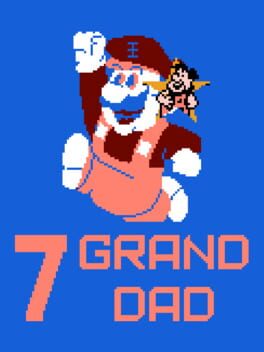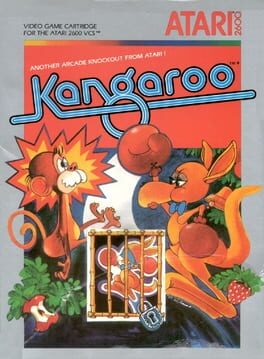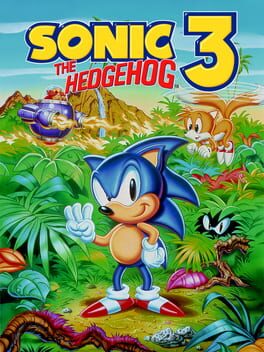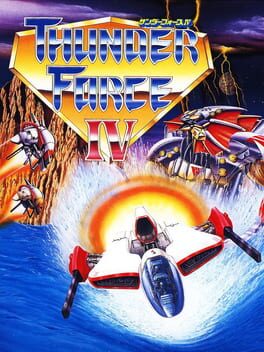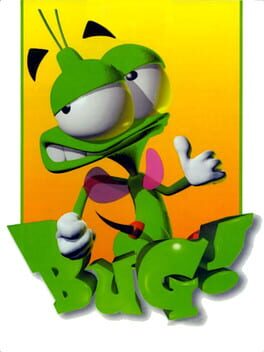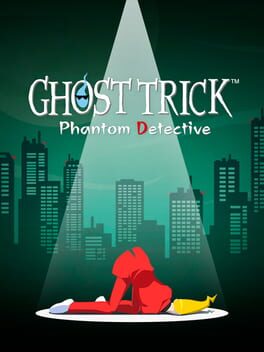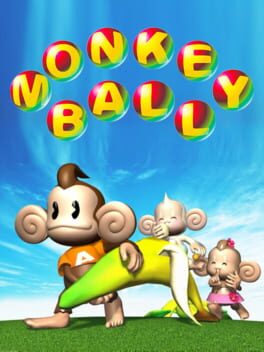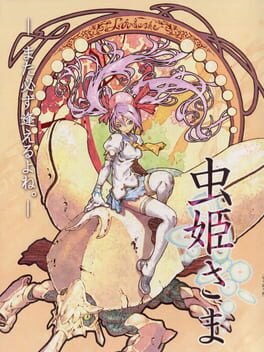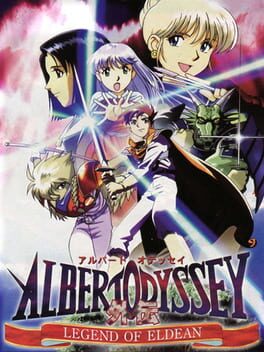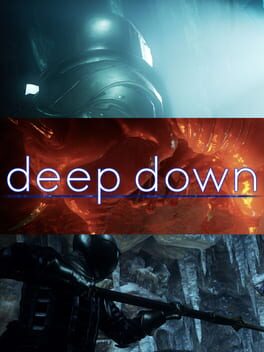HylianBran
BACKER
2251 Reviews liked by HylianBran
7 Grand Dad
1992
7 Grand Dad
1992
Kangaroo
1982
Sonic the Hedgehog 3
1994
It's insanely easy in today's context to write off vanilla Sonic 3 and to only play the lock-on version, but there's a very important thing you're missing out on, and that's getting to hear the mini-boss music that's exclusive to this version.
It's such a funny ass song to use as a boss fight theme especially in the context of a forest getting napalmed, it'd be like if you fought Maruyama/Trouble Bruin in Dynamite Headdy to his appearance theme instead. That second-and-a-half-long introduction that's essentially a baseball organ doing a board game jingle that leads straight into a bit crushed "C'MON" voice sample with tapdancing noises and a funk beat behind it is somehow simultaneously the funniest and hardest shit I ever heard in my life. The only way you could escalate this, would be if you had a dopey-ass three second long french horn that went straight into extreme sludge metal. If I had to use entrance music that wasn't Maruyama's theme it'd be this. This is like top three music to interrupt someone cutting a promo with. Imagine if people got to reel in terror at the sound of the goofy baseball organ during Smackdown as if The Undertaker's gong went off.
God, so fuckin' good. The comedian who designed Carnival Night Zone Act 2 will be hearing this music very soon, I assure you.
It's such a funny ass song to use as a boss fight theme especially in the context of a forest getting napalmed, it'd be like if you fought Maruyama/Trouble Bruin in Dynamite Headdy to his appearance theme instead. That second-and-a-half-long introduction that's essentially a baseball organ doing a board game jingle that leads straight into a bit crushed "C'MON" voice sample with tapdancing noises and a funk beat behind it is somehow simultaneously the funniest and hardest shit I ever heard in my life. The only way you could escalate this, would be if you had a dopey-ass three second long french horn that went straight into extreme sludge metal. If I had to use entrance music that wasn't Maruyama's theme it'd be this. This is like top three music to interrupt someone cutting a promo with. Imagine if people got to reel in terror at the sound of the goofy baseball organ during Smackdown as if The Undertaker's gong went off.
God, so fuckin' good. The comedian who designed Carnival Night Zone Act 2 will be hearing this music very soon, I assure you.
Thunder Force IV
1992
Recommended by FallenGrace as part of this list.
I may never gain the ability to be even halfway decent at shooters, but I think I can recognize a good one when I see one. Immediately, this game does something I found interesting in that you can do the first four levels in whatever order you feel like, similar to Mega Man in a way. I started with level three, which I actually found the hardest of the first four levels. Don't get it twisted though, just because I found this the hardest of the initial levels doesn't mean the others are a cakewalk. This game is quite challenging and some of the later levels felt like an endurance test.
I don't know if this is a common feature in a lot of other shooters, but unlike most of the ones I've played, picking up a powerup doesn't replace the one you're currently using, instead with the press of the C button you can switch between all your collected weapons, five in total! Although dying will result in you losing your currently equipped weapon, but don't fret, as it seemed like powerups were quite plentiful, at least for me. I don't know what I'd do without my beloved blade and hunter shots. You can press the A button to adjust your ship's speed by a multiple of 25 up to 100 speed and by holding the A button you can adjust it to a specific number of your liking (I mostly kept it at 80 speed).
Upon starting a level, you might notice that the screen can scroll vertically down. Most levels are like this and it's great as it gives you more of a chance to avoid oncoming projectiles. By the way, this game is gorgeous! That parallax scrolling used on the ocean in the first level looks so good! I do have to mention this though, the game suffers from quite a bit of slowdown, but this might be a blessing in disguise. The Saturn and the Sega Ages rerelease of the game remove most, if not all, of the slowdown, but in return, might make the game even more difficult for you. Lastly, before I close this off, I gotta mention the soundtrack; it rocks just like the rest of the game!
I may never gain the ability to be even halfway decent at shooters, but I think I can recognize a good one when I see one. Immediately, this game does something I found interesting in that you can do the first four levels in whatever order you feel like, similar to Mega Man in a way. I started with level three, which I actually found the hardest of the first four levels. Don't get it twisted though, just because I found this the hardest of the initial levels doesn't mean the others are a cakewalk. This game is quite challenging and some of the later levels felt like an endurance test.
I don't know if this is a common feature in a lot of other shooters, but unlike most of the ones I've played, picking up a powerup doesn't replace the one you're currently using, instead with the press of the C button you can switch between all your collected weapons, five in total! Although dying will result in you losing your currently equipped weapon, but don't fret, as it seemed like powerups were quite plentiful, at least for me. I don't know what I'd do without my beloved blade and hunter shots. You can press the A button to adjust your ship's speed by a multiple of 25 up to 100 speed and by holding the A button you can adjust it to a specific number of your liking (I mostly kept it at 80 speed).
Upon starting a level, you might notice that the screen can scroll vertically down. Most levels are like this and it's great as it gives you more of a chance to avoid oncoming projectiles. By the way, this game is gorgeous! That parallax scrolling used on the ocean in the first level looks so good! I do have to mention this though, the game suffers from quite a bit of slowdown, but this might be a blessing in disguise. The Saturn and the Sega Ages rerelease of the game remove most, if not all, of the slowdown, but in return, might make the game even more difficult for you. Lastly, before I close this off, I gotta mention the soundtrack; it rocks just like the rest of the game!
Bug!
1995
It was the summer of '95. Batman Forever was in theaters, Cotton Eye Joe was on the radio, and uhh hold on let me google something...uhh The NATO bombing campaign against Bosnian Serb artillery positions begins in Bosnia and Herzegovina. It was a time of change, revelations, revolution, and at the forefront of all this was one man, nay, a creature. A green guy with a big game and an even BIGGER attitude. What he lacks in size, he makes up for in style, as well as his huge cock. The man, the myth, the legend, the thing on everyone's mind, a one-syllable name that could move mountains and catch lightning: Bug!
Ahh, The Summer of Bug. Of course I wasn't born at the time to experience it, but if I had a time machine, the first thing I would do is transport myself to August 1995, to be there amongst the people that Bug brought together. The comradery, the kinship, the warmth of men setting aside their difference for one day, to unite in the reverie brought on by Bug's release. But of course, I'm only recounting what has already been extensively documented, analyzed, and mythologized in the past decades since that day. Echoes of Bug's influence can be heard throughout our daily lives, in everything we see and do, Bug has its place. This is, as everyone knows, why every family in the world always leaves one seat at the table empty, for it is Bug's place to sit. The term "monogamy" is now obsolete, as any couple fully understands they are in a relationship with not just their partner, but with Bug as well.
(In the year 2072) My two horrible grandchildren who want me dead: "Shut up, grandpa! We hate this story and we hate Bug! We like our other grandpa better, he has a region-free Saturn with a 4MB RAM cartridge!"
Oh ho ho, you kids. Someday you'll understand. You'll understand that your other grandpa is going to hell, along with anyone else who covets the RAM cartridge. Ahhh, all this recounting is making me tired, let your old peepaw nap for just a minute.
Goes to sleep, never wakes up again
Ahh, The Summer of Bug. Of course I wasn't born at the time to experience it, but if I had a time machine, the first thing I would do is transport myself to August 1995, to be there amongst the people that Bug brought together. The comradery, the kinship, the warmth of men setting aside their difference for one day, to unite in the reverie brought on by Bug's release. But of course, I'm only recounting what has already been extensively documented, analyzed, and mythologized in the past decades since that day. Echoes of Bug's influence can be heard throughout our daily lives, in everything we see and do, Bug has its place. This is, as everyone knows, why every family in the world always leaves one seat at the table empty, for it is Bug's place to sit. The term "monogamy" is now obsolete, as any couple fully understands they are in a relationship with not just their partner, but with Bug as well.
(In the year 2072) My two horrible grandchildren who want me dead: "Shut up, grandpa! We hate this story and we hate Bug! We like our other grandpa better, he has a region-free Saturn with a 4MB RAM cartridge!"
Oh ho ho, you kids. Someday you'll understand. You'll understand that your other grandpa is going to hell, along with anyone else who covets the RAM cartridge. Ahhh, all this recounting is making me tired, let your old peepaw nap for just a minute.
Goes to sleep, never wakes up again
In his video last year regarding context sensitivity, Matthewmatosis opens by describing Ghost Trick as entirely context-sensitive: the main action button ("trick") always performs a different action depending on the item possessed. However, he points this out as an exception to the trend of heavy context-sensitivity weighing down modern titles, because simply put, Ghost Trick uses context-sensitivity not as a crutch, but as its core. It never seems to suffer from fuzzy context: the game not only gives you plenty of safe time to experiment with set-pieces leading up to timed sequences (since untimed traversal to the victim is every bit a puzzle in itself), but also briefly describes the single "trick" of each object possessed to give players an idea of how to progress. Furthermore, Ghost Trick's difficulty hits a perfect sweet-spot: it doesn't feel free because traversal and manipulating objects to your advantage require a good degree of planning and experimentation, but failure also never feels too punishing because other characters and the environment are great at providing thoughtful feedback upon failure, so the player isn't just banging their head against a wall via quick restarts at built-in checkpoints.
Essentially, it's like playing the ancestor of Return of the Obra Dinn but with a time loop mechanic attached. The objective remains simple (travel back to four minutes before death to avert fate), but how to achieve said objective is always completely dictated by your surroundings. As a result, it naturally iterates upon its basic structure to create more unconventional scenarios: soon you're not just manipulating objects for traversal and foiling assassins, you're also solving locked room mysteries, or traveling to different environments to save victims from elsewhere, or diving into deaths within deaths to avert multiple fates at a time. Through all of this, Ghost Trick understands one of the key strengths of video games: creating virtual playgrounds of experimentation unsaddled by the limitations of time to reward players through the joy of discovery. The player is constantly surprised time and time again not only from unexpected object interactions, but also from how the narrative weaves in and out of death sequences to create suspenseful moments. It's a minor miracle in itself that the story never jumps the shark: the gameplay mechanics remain firmly consistent alongside its lore, and every plot thread is neatly wrapped up by the end of the game after a series of subtly foreshadowed twists. Combine this marrying of storytelling and gameplay with expressive animations, a colorful and very personable cast, an understated yet powerful soundtrack, and a great mix of humor and emotional moments, and you get what is perhaps the most cohesive title in the DS library.
It's rather poetic that a game which looked simple on the outside provided such an intricate exercise for Shu Takumi to prove that he was no one-trick pony. I'm grateful that Ghost Trick has finally been ported to modern systems for a whole new audience to lose their minds over this, for it's a masterpiece that everyone owes to themselves to check out. At the end of the day, nothing feels quite as cathartic as miraculously changing destiny in the face of inevitable death.
Essentially, it's like playing the ancestor of Return of the Obra Dinn but with a time loop mechanic attached. The objective remains simple (travel back to four minutes before death to avert fate), but how to achieve said objective is always completely dictated by your surroundings. As a result, it naturally iterates upon its basic structure to create more unconventional scenarios: soon you're not just manipulating objects for traversal and foiling assassins, you're also solving locked room mysteries, or traveling to different environments to save victims from elsewhere, or diving into deaths within deaths to avert multiple fates at a time. Through all of this, Ghost Trick understands one of the key strengths of video games: creating virtual playgrounds of experimentation unsaddled by the limitations of time to reward players through the joy of discovery. The player is constantly surprised time and time again not only from unexpected object interactions, but also from how the narrative weaves in and out of death sequences to create suspenseful moments. It's a minor miracle in itself that the story never jumps the shark: the gameplay mechanics remain firmly consistent alongside its lore, and every plot thread is neatly wrapped up by the end of the game after a series of subtly foreshadowed twists. Combine this marrying of storytelling and gameplay with expressive animations, a colorful and very personable cast, an understated yet powerful soundtrack, and a great mix of humor and emotional moments, and you get what is perhaps the most cohesive title in the DS library.
It's rather poetic that a game which looked simple on the outside provided such an intricate exercise for Shu Takumi to prove that he was no one-trick pony. I'm grateful that Ghost Trick has finally been ported to modern systems for a whole new audience to lose their minds over this, for it's a masterpiece that everyone owes to themselves to check out. At the end of the day, nothing feels quite as cathartic as miraculously changing destiny in the face of inevitable death.
Monkey Ball
2001
adding another feather to my cap by winning this year's monkey ball tournament at magfest after last year's typing of the dead win. a friend of mine has run lights and lasers at magfest on and off for the last decade or so, and when he told me there was a monkey ball cabinet in the arcade during a walk-through the night before it opened I was overjoyed. memories of old cons with filthy, unmaintained cabinets that one could barely roll through beginner courses on drifted away as I hoped this would finally give me the monkey ball arcade experience I had waited for. the last-minute announcement of a tournament was even more appealing; this would finally put my endless pandemic training to good use.
they had two cabinets in fact: an original stand-up cab, near flawless except for an uncomfortably dim screen, and a naomi kit and 3d-printed banana shoved into an astro city cab for those who preferred to sit down. both cabs were swarmed at open time, but I snuck in some time on the astro city cab late the first night. the setup was appreciated but god was it sensitive; imagine a joystick with the same deadzones and behavior of the gamecube analog stick, but with a porn-quality cock-sized banana attached to it, nauseating yellow from the printer filament. I resorted to two-handing the monster, using one hand to brace it while gently pressing it with the other. the original cabinet was completely stiff by comparison. even minimal motions required cranking it to either side, and certain full-length presses felt like they lacked the tilting distance of the gamecube version. definitely a learning curve, but it was to be expected. it was my first time, after all.
unlike typing of the dead, which at least had some head-to-head scoring support, monkey ball's tournament was structured as consecutive single credit runs between two players in bracket matches. begs the question of why they didn't just do a pool structure since it was all single elim anyway; a friend of mine who runs my hometown arcade organized the proceedings, so I wasn't about to crawl up his ass about it. score attack also left the crowd puzzled, as most of us ignore score in comparison to floor count. a quick google search as the competition started rolling led me to this particular guide (specifically section 2.6), which outlined the scoring system in some detail. effectively the number of seconds (including centiseconds) multiplied by 100 gives the bulk of the score, with the score doubled if it was done in less than half of the allotted time. bananas contribute another 100 points for each one obtained. however, warps contribute significantly more points, as a green warp goal will give 10000 additional points on the base value (reds give 20000) along with an additional multiplier for each stage skipped. the latter multiplier makes up for score lost on skipped levels, but the base bonus is pretty intense overall; there aren't levels that can give you anything close to 10000 points as a base, much less several in a row! when it comes to a score attack competition, warps are overly centralizing, to the extent that a player could perform worse and still secure a win by locking a warp.
so to the player I unfairly trampled first round, I'm real sorry. you breezed through beginner without dropping a single life, showing off little skips and flair in the process. I popped in after and warped through most of it and demolished your score, even tho I dropped a life and missed the extra stages. it was honestly a screwjob, and I don't blame you for running off afterwards. in the final round a similar issue happened, where two people in a match on expert each got the warp on floor 2, with one person failing at the infamous floor 7 (also known as Exam-C), and the other getting a couple floors beyond that. the former person flew through the warp and got the time bonus, doubling a 70k reward to 140k points and completely blowing the other person out of the water, floors be damned. hell, the same round I took a single credit all the way to floor 16 and I still did not get as many points as she did thanks to an overly cautious run through floor 2. it really was a bit ridiculous. however, these tournaments are about understanding the rules, not necessarily agreeing on whether they're fair. so, emboldened by my rather strong previous showing (only one other person got a run past floor 10), I threw caution to the wind on my floor 2 attempt, snagged the time bonus, and that was it, even with a total choke on floor 7.
of course, in console play I can comfortably take a 1cc all the way through expert extra, so this shouldn't have felt that impressive, but on the chunky banana the gamefeel transformed the game a fair bit. the whole tournament was on the original cabinet with the weightier controls, so nailing the precision of floors like 14 where nudges around pegs that will bounce you off ledges was as easy as just pressing the stick in the right direction; no attention to minuscule movement required. it's when it got to floors demanding quick build-ups of speed or wild tilts such as floor 18 that it began to dawn on me that perhaps the cabinet was not as in perfect of a condition as I had hoped; could have also been some early control mistuning by the developers, but I'd like to think they understood their own game well enough to design levels around the original stick. still, we got lucky that plenty of extremely challenging stages are front-loaded in expert, as we all still got a good show of some very solid east coast players taking a crack at a sega classic. maybe we would've all preferred to play on gamecube instead tho lol
they had two cabinets in fact: an original stand-up cab, near flawless except for an uncomfortably dim screen, and a naomi kit and 3d-printed banana shoved into an astro city cab for those who preferred to sit down. both cabs were swarmed at open time, but I snuck in some time on the astro city cab late the first night. the setup was appreciated but god was it sensitive; imagine a joystick with the same deadzones and behavior of the gamecube analog stick, but with a porn-quality cock-sized banana attached to it, nauseating yellow from the printer filament. I resorted to two-handing the monster, using one hand to brace it while gently pressing it with the other. the original cabinet was completely stiff by comparison. even minimal motions required cranking it to either side, and certain full-length presses felt like they lacked the tilting distance of the gamecube version. definitely a learning curve, but it was to be expected. it was my first time, after all.
unlike typing of the dead, which at least had some head-to-head scoring support, monkey ball's tournament was structured as consecutive single credit runs between two players in bracket matches. begs the question of why they didn't just do a pool structure since it was all single elim anyway; a friend of mine who runs my hometown arcade organized the proceedings, so I wasn't about to crawl up his ass about it. score attack also left the crowd puzzled, as most of us ignore score in comparison to floor count. a quick google search as the competition started rolling led me to this particular guide (specifically section 2.6), which outlined the scoring system in some detail. effectively the number of seconds (including centiseconds) multiplied by 100 gives the bulk of the score, with the score doubled if it was done in less than half of the allotted time. bananas contribute another 100 points for each one obtained. however, warps contribute significantly more points, as a green warp goal will give 10000 additional points on the base value (reds give 20000) along with an additional multiplier for each stage skipped. the latter multiplier makes up for score lost on skipped levels, but the base bonus is pretty intense overall; there aren't levels that can give you anything close to 10000 points as a base, much less several in a row! when it comes to a score attack competition, warps are overly centralizing, to the extent that a player could perform worse and still secure a win by locking a warp.
so to the player I unfairly trampled first round, I'm real sorry. you breezed through beginner without dropping a single life, showing off little skips and flair in the process. I popped in after and warped through most of it and demolished your score, even tho I dropped a life and missed the extra stages. it was honestly a screwjob, and I don't blame you for running off afterwards. in the final round a similar issue happened, where two people in a match on expert each got the warp on floor 2, with one person failing at the infamous floor 7 (also known as Exam-C), and the other getting a couple floors beyond that. the former person flew through the warp and got the time bonus, doubling a 70k reward to 140k points and completely blowing the other person out of the water, floors be damned. hell, the same round I took a single credit all the way to floor 16 and I still did not get as many points as she did thanks to an overly cautious run through floor 2. it really was a bit ridiculous. however, these tournaments are about understanding the rules, not necessarily agreeing on whether they're fair. so, emboldened by my rather strong previous showing (only one other person got a run past floor 10), I threw caution to the wind on my floor 2 attempt, snagged the time bonus, and that was it, even with a total choke on floor 7.
of course, in console play I can comfortably take a 1cc all the way through expert extra, so this shouldn't have felt that impressive, but on the chunky banana the gamefeel transformed the game a fair bit. the whole tournament was on the original cabinet with the weightier controls, so nailing the precision of floors like 14 where nudges around pegs that will bounce you off ledges was as easy as just pressing the stick in the right direction; no attention to minuscule movement required. it's when it got to floors demanding quick build-ups of speed or wild tilts such as floor 18 that it began to dawn on me that perhaps the cabinet was not as in perfect of a condition as I had hoped; could have also been some early control mistuning by the developers, but I'd like to think they understood their own game well enough to design levels around the original stick. still, we got lucky that plenty of extremely challenging stages are front-loaded in expert, as we all still got a good show of some very solid east coast players taking a crack at a sega classic. maybe we would've all preferred to play on gamecube instead tho lol
Mushihimesama
2004
I'm pretty selective with my ratings, I feel. Sure, I make myself rather predictable by typically sticking within the 5-7 range, but it's not like I'm throwing out high or low scores out the wazoo. Generally, I focus on the speculation and intake process of what people have been saying about something, and sort my expectations around those, so usually nothing really strikes me out or base myself on gut feeling when I check them out. Shmups aren't really my forte, but I do have experience with a fair number of them to know the dos and don'ts, plus I like throwing myself at the mercy of danmaku "go big or go home" escalations, so I was expecting to at least casually enjoy this.
The first boss reinforced my initial outset since, from the get-go, it already establishes everything CAVE wants to bedazzle you with. Majority of its patterns and enemy positions are simple and easy to fixate on, but the application of these Koujuu buggers (literally!) within their speed is what sets this apart. Spread shots, buckshots, rollers, overlays, if you can name and think of it, chances are Akira Wakabayashi and Co. have thought of it. A lot of the characteristics expressed from these bugs also shine due to Akira focusing strongly on the entomological aspect of these creatures to relay onto the artists, with director and programmer Tsuneki Ikeda also noting that it was a return to roots foundation, along with utilizing this as a benchmark for new hardware. Obviously there's some Nausicaa-distilled vibes lingering beneath and on top of the naturalistic world, but the differing aspects of the forests within Mushi's world also tend to give rise into other foundations as you go along, marking your progress as either the blues of Stage 4 or the washed greens of Stage 2 to name some examples, establishing more of an interpersonal relationship with the player and the bullet mechanics. This also doubles up on the repeat learning of the reliable M Shot, the wide but meek W Shot, or the strict yet powerful S Shot. It takes two to tango after all, even if the denizens prefer blasting you away.
To go further about the remarks Ikeda has given, as well as deepen my point about simplicity thrusting itself unto elegance and sensation, two details he's revealed before are about the stronger focus on the characters Reco and Aki, alongside the principles of establishing the high of navigating around these bullets in the first place. That said, I'm choosing to forgo an in-depth look into the mechanical side of the game, since to reiterate I'm pretty green with shmups and also cause I'm still aiming to improve myself with this, and not to mention I'm more focused on the character angle. Shmups tend to not indulge on this aspect of game design, which is fair, but the way Mushi goes about it is very intriguing. Even disregarding the fervent chaos and hostile bombarding, art CGs shown upon level completion visualize the story between Reco's past venture within a forest, and Aki's help in succoring her life via a bracelet embodying crystalized forces of the Koujuu. Years have past, climate has worsened for her village, and its through her flight with the help of a beetle named Kiniro that she sets off to ascertain what has wrought upon them, subtly embellishing and engrossing herself within this area. I wouldn't classify it as Man Vs. Nature as it first appears, despite the parasitic symbiosis between the humanoids inhabiting the area and how the creatures react to them, but there's a subtext feeling of melancholy. The way Reco learns and overcomes these sorts of ordeals and predicaments within the setting is akin to we, the players, adapt and recognize all these obstacles. In a way, it's fitting the True Final Boss is Like That to be climax of both of these themes, even if the true reason is because they just wanted to fuck around with your expectations and play.
I always figured I'd like Mushihimesama, but there's a lot of special somethins within this gem of an amber-colored set. I've done Arrange, I've dabbled with Maniac and Ultra, and even partook in trying out Ver 1.5 as well, all of which are worth exploring. Related to that, the compositions provided by Manabu Namiki and Masaharu Iwata are top-to-bottom bangers. I already went into enough lengths in justifying my High IQ reading of a simple plot, not to mention I already went on-and-on about the connection and design workings between the player and the system, so I'll just go over my favorite tracks of this: Requiem Of The Sky, Like A Night Of Falling Stars, Levi-Sense, really I just recommend sitting down and soaking it all in regardless of playing the game or for casual listening. We talkin S-Tier OST material, be it the original or various arrangements made for the other modes, and I already went the extra yard and put the OST onto my phone to listen to whenever. This one's for my rotational books for sure.
The first boss reinforced my initial outset since, from the get-go, it already establishes everything CAVE wants to bedazzle you with. Majority of its patterns and enemy positions are simple and easy to fixate on, but the application of these Koujuu buggers (literally!) within their speed is what sets this apart. Spread shots, buckshots, rollers, overlays, if you can name and think of it, chances are Akira Wakabayashi and Co. have thought of it. A lot of the characteristics expressed from these bugs also shine due to Akira focusing strongly on the entomological aspect of these creatures to relay onto the artists, with director and programmer Tsuneki Ikeda also noting that it was a return to roots foundation, along with utilizing this as a benchmark for new hardware. Obviously there's some Nausicaa-distilled vibes lingering beneath and on top of the naturalistic world, but the differing aspects of the forests within Mushi's world also tend to give rise into other foundations as you go along, marking your progress as either the blues of Stage 4 or the washed greens of Stage 2 to name some examples, establishing more of an interpersonal relationship with the player and the bullet mechanics. This also doubles up on the repeat learning of the reliable M Shot, the wide but meek W Shot, or the strict yet powerful S Shot. It takes two to tango after all, even if the denizens prefer blasting you away.
To go further about the remarks Ikeda has given, as well as deepen my point about simplicity thrusting itself unto elegance and sensation, two details he's revealed before are about the stronger focus on the characters Reco and Aki, alongside the principles of establishing the high of navigating around these bullets in the first place. That said, I'm choosing to forgo an in-depth look into the mechanical side of the game, since to reiterate I'm pretty green with shmups and also cause I'm still aiming to improve myself with this, and not to mention I'm more focused on the character angle. Shmups tend to not indulge on this aspect of game design, which is fair, but the way Mushi goes about it is very intriguing. Even disregarding the fervent chaos and hostile bombarding, art CGs shown upon level completion visualize the story between Reco's past venture within a forest, and Aki's help in succoring her life via a bracelet embodying crystalized forces of the Koujuu. Years have past, climate has worsened for her village, and its through her flight with the help of a beetle named Kiniro that she sets off to ascertain what has wrought upon them, subtly embellishing and engrossing herself within this area. I wouldn't classify it as Man Vs. Nature as it first appears, despite the parasitic symbiosis between the humanoids inhabiting the area and how the creatures react to them, but there's a subtext feeling of melancholy. The way Reco learns and overcomes these sorts of ordeals and predicaments within the setting is akin to we, the players, adapt and recognize all these obstacles. In a way, it's fitting the True Final Boss is Like That to be climax of both of these themes, even if the true reason is because they just wanted to fuck around with your expectations and play.
I always figured I'd like Mushihimesama, but there's a lot of special somethins within this gem of an amber-colored set. I've done Arrange, I've dabbled with Maniac and Ultra, and even partook in trying out Ver 1.5 as well, all of which are worth exploring. Related to that, the compositions provided by Manabu Namiki and Masaharu Iwata are top-to-bottom bangers. I already went into enough lengths in justifying my High IQ reading of a simple plot, not to mention I already went on-and-on about the connection and design workings between the player and the system, so I'll just go over my favorite tracks of this: Requiem Of The Sky, Like A Night Of Falling Stars, Levi-Sense, really I just recommend sitting down and soaking it all in regardless of playing the game or for casual listening. We talkin S-Tier OST material, be it the original or various arrangements made for the other modes, and I already went the extra yard and put the OST onto my phone to listen to whenever. This one's for my rotational books for sure.
Ridge Racer 64
2000
In modern times hearing that a Japanese game is getting a western release is pretty standard news. With this information is generally the assumption that in most cases that will mean it will get a release in North America and most countries in Europe at a bare minimum but that wasn't always the case. Back in the 90's and early 2000's if a game got a western release announcement you had to actually look what that meant. Being from Europe we missed a lot of games that were released only in North America back then. Titles like Parasite Eve, Xenogears, Chrono trigger / Cross, Final Fantasy Tactics, Xenosaga 1 & 3 (2 came out here in an odd twist) among a huge slew of others.
One of these titles was Albert Odyssey: Legend of Eldean for the Sega Saturn. It's the third game in the series, first to get a release outside of Japan and even then to North America only. (The original SNES Albert Odyssey does have an English patch to those interested, though it's sequel is still only in Japanese at this time). Legend of Eldean was localised into English by a company called Working Designs. They did a whole host of localisations for obscure JRPGs back then that would never have seen the light of day here without them. On the flipside however they are infamous for butchering dialogue and localising the games so that 'American audiences could understand them' which is both patronising and damaging to the integrity of the games.
The dialogue in Albert Odyssey is dreadful, there is just no other way to phrase it. At times it has pop culture references that aged terribly, mentions Sweden, Burritos as well as some extremely edgy sexism and phrasing that add nothing to the game. I have no idea how much of it was them taking liberties, and how much of it was just bad from the original game but either way I do wish there was an 'un-working' design patch to correct some of these issues when they appear. It isn't constant but it's jarring enough when it happens to be both hugely out of place and irritating when it does. The over arcing story of Albert Odyssey equally suffers though through no fault of Working Designs but the original vision. It feels like two different games merged together that don't have much in common leaving the plot feeling poorly paced.
The thing is though, this isn't a bad game, I actually enjoyed my time with it despite my issues above. Visually it's gorgeous using lovely pixel art as it started as a SNES game and the Saturn was always a 2D powerhouse. I love the artwork and character portraits. Sounding like an old man here but 80's and 90's anime designs were at their height back then. The game is extremely vibrant and colourful and has a neat little soundtrack to match it. The combat is a simple affair taking a departure from the first two games which were SRPGs to a basic turn based system with, attack, defend, magic and item. Nothing special here but kind of quaint in an old school way as someone who grew up with this as fairly standard.
It's got it's charm and it's easy and fun to play through. I appreciate it when you get non human cast members in games and Albert Odyssey leans into that. The last dungeon is a bit of a headache and the writing and pacing are questionable but overall it is an enjoyable little game that is worth the time to play.
+ Gorgeous art and colour.
+ Nice music.
+ Has a lot of charm and an almost nostalgic feeling to it.
- Localisation liberties at times make the writing insufferable.
- The over arching story is a little all over the place.
One of these titles was Albert Odyssey: Legend of Eldean for the Sega Saturn. It's the third game in the series, first to get a release outside of Japan and even then to North America only. (The original SNES Albert Odyssey does have an English patch to those interested, though it's sequel is still only in Japanese at this time). Legend of Eldean was localised into English by a company called Working Designs. They did a whole host of localisations for obscure JRPGs back then that would never have seen the light of day here without them. On the flipside however they are infamous for butchering dialogue and localising the games so that 'American audiences could understand them' which is both patronising and damaging to the integrity of the games.
The dialogue in Albert Odyssey is dreadful, there is just no other way to phrase it. At times it has pop culture references that aged terribly, mentions Sweden, Burritos as well as some extremely edgy sexism and phrasing that add nothing to the game. I have no idea how much of it was them taking liberties, and how much of it was just bad from the original game but either way I do wish there was an 'un-working' design patch to correct some of these issues when they appear. It isn't constant but it's jarring enough when it happens to be both hugely out of place and irritating when it does. The over arcing story of Albert Odyssey equally suffers though through no fault of Working Designs but the original vision. It feels like two different games merged together that don't have much in common leaving the plot feeling poorly paced.
The thing is though, this isn't a bad game, I actually enjoyed my time with it despite my issues above. Visually it's gorgeous using lovely pixel art as it started as a SNES game and the Saturn was always a 2D powerhouse. I love the artwork and character portraits. Sounding like an old man here but 80's and 90's anime designs were at their height back then. The game is extremely vibrant and colourful and has a neat little soundtrack to match it. The combat is a simple affair taking a departure from the first two games which were SRPGs to a basic turn based system with, attack, defend, magic and item. Nothing special here but kind of quaint in an old school way as someone who grew up with this as fairly standard.
It's got it's charm and it's easy and fun to play through. I appreciate it when you get non human cast members in games and Albert Odyssey leans into that. The last dungeon is a bit of a headache and the writing and pacing are questionable but overall it is an enjoyable little game that is worth the time to play.
+ Gorgeous art and colour.
+ Nice music.
+ Has a lot of charm and an almost nostalgic feeling to it.
- Localisation liberties at times make the writing insufferable.
- The over arching story is a little all over the place.
Deep Down
TBD
went in expecting another mediocre disappointment only to be blow away by how deep and engaging it is down there. even for someone who mainly prefers to play games by myself, they COOP was incredibly fun and intense and the fact that that most of the mechanics push for team helps the experience alot. aside from a few hiccups in the sunken mossvalley, this might be the best designed coop game out there even better than gunstar heroes.
Deep Down
TBD
Deep Down
TBD
There's something undeniably bitter about the whole experience of Bubsy 3D: Bubsy Visits the James Turrell Retrospective. I think a version of me from a couple years ago would have found this at least a little interesting, but at this point all I see is just irony on top of irony on top of irony. The issue with internet irony and post-irony is that it's a distancer, it's a deliberate refusal to be genuine even for a second.
But even when you pull it apart it's just, like, high school nihilism. Ok dude, art sucks, life sucks, we're all gonna die, whatever man. Ironically, in the traditional sense, this game spends most of its time shitting on what it perceives to be "stuck-up postmodern art that thinks it's smarter than it is", while also being a piece of postmodern art that has pretty much nothing interesting or emotionally resonant to say. If you want to see postmodern artists take the piss out of themselves just watch The Comedy (2012) instead.
But even when you pull it apart it's just, like, high school nihilism. Ok dude, art sucks, life sucks, we're all gonna die, whatever man. Ironically, in the traditional sense, this game spends most of its time shitting on what it perceives to be "stuck-up postmodern art that thinks it's smarter than it is", while also being a piece of postmodern art that has pretty much nothing interesting or emotionally resonant to say. If you want to see postmodern artists take the piss out of themselves just watch The Comedy (2012) instead.
